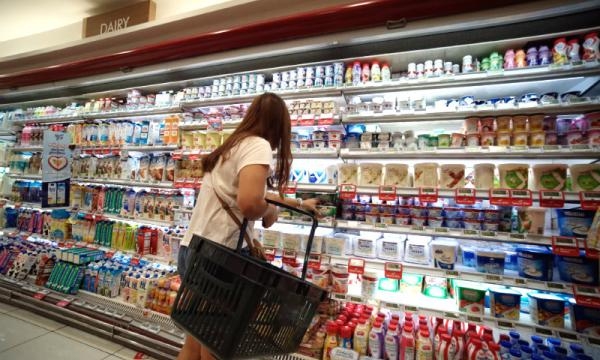
Grocery players' struggles hold firm despite store supply spike
The sharp 4% growth of outlets in 2018 marks the sector's cyclical problem as supply has only grown 1.6% for the past five years, an analyst said.
The surge in store outlets does not necessarily signal a turnaround for Singapore's brick-and-mortar grocers as evidenced when same-store sales growth (SSSG) turned negative in Q4 although their only consolation may be that online retailers are struggling just as much, according to RHB Research.
Statistics from Euromonitor cited in RHB showed that the total number of supermarkets and hypermarkets hit a five-year high after surging 4% with an additional 14 stores in 2018
According to RHB Research analyst Juliana Cai, this can be attributed to the higher supply of new sites available from the Housing Development Board (HDB) that were assigned for supermarkets in 2018.
Also read: Supermarkets lock horns for coveted HDB retail spaces
“However, we believe the problem grocery retailers face is more cyclical than structural compared to the F&B players. This is because the total number of supermarkets and hypermarkets outlets has only expanded by 1.6% over the last five years,” she explained. “We believe the sudden oversupply of grocery retailers is largely a timing issue and note that the number of new HDB sites available for bids (for supermarkets) has also moderated for 2019.”
There are nine supermarket sites that will be put up for bids until end-2019, including a 500-sqm space along Sumang Walk in Punggol Bayview, an 800-sqm area along Woodlands Street 13 in Woodlands Marsiling Greenview and a 1,000-sqm site along Tampines North Drive 1 in Tampines GreenWeave.

However, physical retailers need not fear heightened competition from e-retailers as online grocery services in Singapore remain at a nascent phase withRHB Research estimating that the online format could constitute approximately 3-4% of Singapore’s grocery market. “That said, the intensity of online competition has peaked,” Cai added.
Cai adds that Redmart, which migrated its app onto the Lazada platform in March, brings about no obvious benefit to consumers except for the $25 worth of vouchers for existing customers who choose to move their accounts from Redmart to Lazada.Similarly, Amazon's widely anticipated debut has since lost hype following the introduction of Prime membership fees in December 2018, said Cai.
“We believe there will be a continued gradual diffusion of customers from brick-and-mortar stores to e-commerce, as consumers become more familiar and comfortable with shopping online. Incumbents will have to improve their online platforms or open in strategic locations to compete on convenience, whilst offering good quality and value,” she said.
























 Advertise
Advertise






